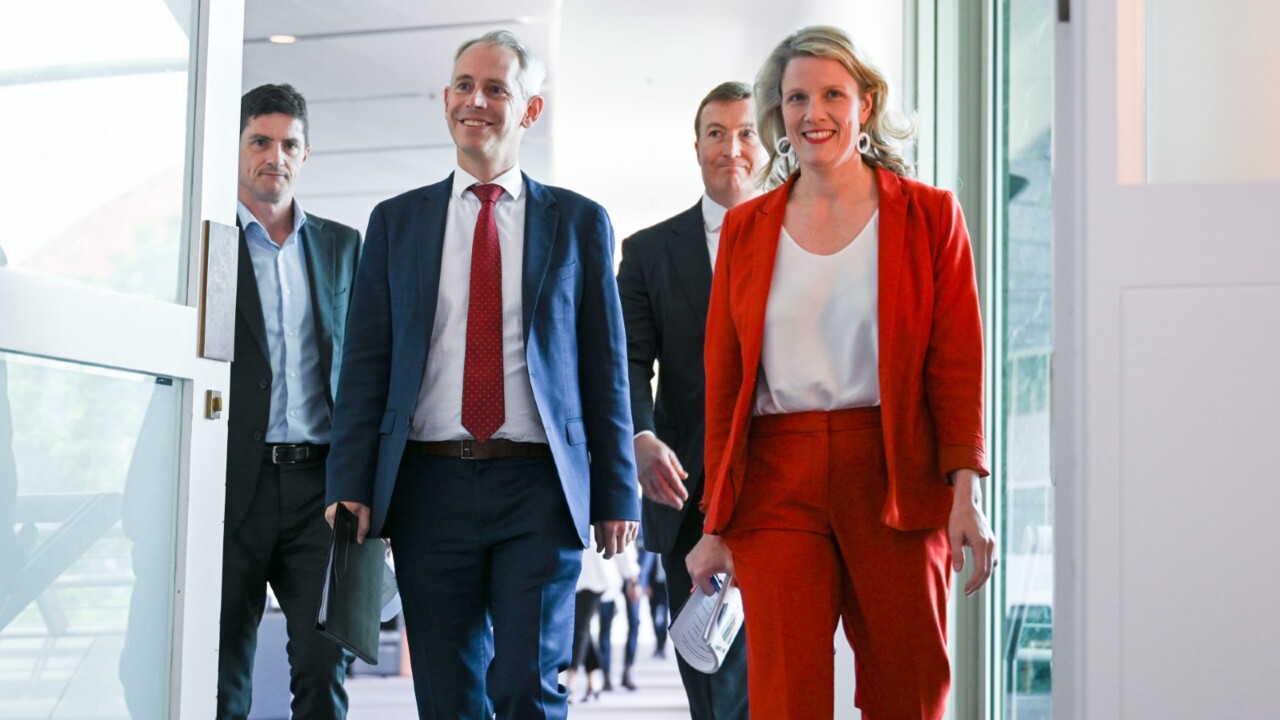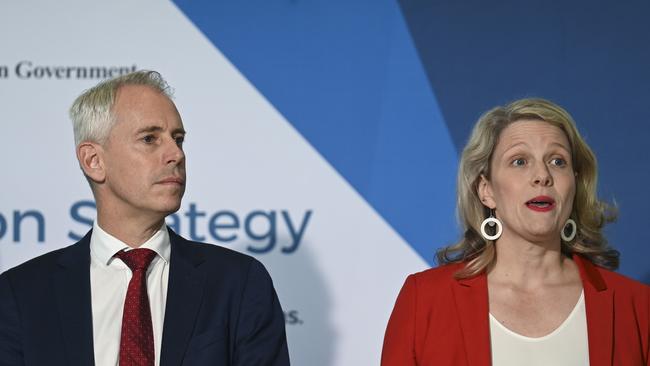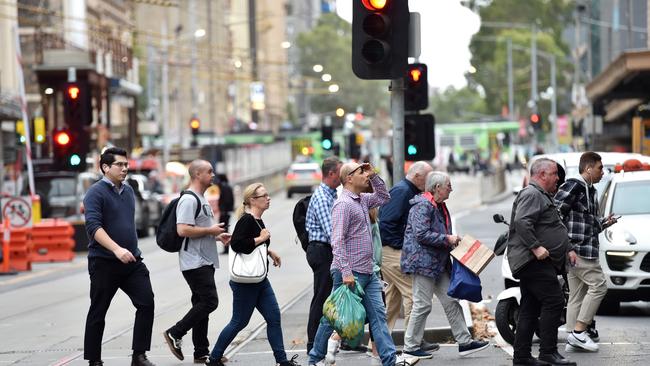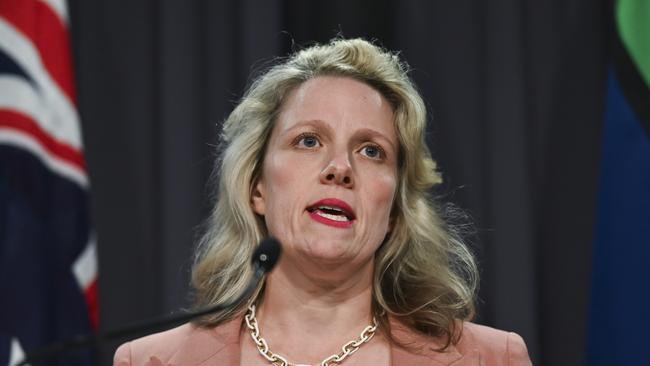Home Affairs Minister Clare O’Neil unveils new migration strategy to crack down on rorting and import skills
Plans to significantly overhaul the “broken” migration system have been unveiled, with a surprising show of solidarity.

Unions and businesses have made a rare show of solidarity in throwing their support behind the federal government’s sweeping migration system overhaul announced on Monday.
Home Affairs Minister Clare O’Neil said the system had been “deliberately neglected over a decade” and pledged to close backdoors that allowed people to “visa jump” and attend “ghost colleges” while pathways for much-needed highly skilled migrants remained convoluted and time consuming.
The strategy will clamp down on an influx of student visas to help curb unsustainable migration levels and return the net migration to “normal” levels and ease pressure on housing and infrastructure.
International students will be subject to more rigorous English requirements and if they want to stay beyond graduation, they must meet the minimum income threshold within two years.
Ms O’Neil also put the tertiary education sector on alert and laid out the government's plans to stifle a rise in bogus universities operating as “visa factories” to enable international students to migrate to Australia for work instead of study, leaving themselves open to exploitation.

“International education is … our fourth largest export … We want to make sure that when students come here to study, they’re actually here to study, and what we’re seeing has been terribly exploitative practices with people who have run scams and got people to pay for visas and use this as an opportunity to come to Australia to work,” she said.
“There’s some big changes to occur here.”
Asked whether the government would consider capping the number of international students granted study visas, Ms O’Neil said she was “confident” the steps being taken would help rein in the exponential growth and make the system more sustainable.
The review also sets out a pathway to divert more temporary work migrants into the region, prioritising their application.

Another key focus of the review will be an overhaul of the skilled work visa system, offering more paths to permanent residency for a new “skills in demand” visa program and developing a specialist skills pathway that the government says will drive innovation and create jobs.
The pathway will remove occupation lists for jobs that pay above $135,000 in a move the government forecasts will add 3000 skilled workers worth $3.4bn to the budget bottom line over the coming decade.
And highly talented applicants needed for crucial jobs in specialist areas like science, technology and cyber security will now have their visas processed within seven days – rather than a year.
Ms O’Neil said the changes would help Australia get the skills it needs, especially in healthcare, the digital economy, and jobs needed for the transition to net zero.
In a rare display, Business Council of Australia chief executive Bran Black and Australian Council of Trade Union assistant secretary Liam O’Brien both stood alongside Ms O’Neil and Immigration Minister Andrew Giles as the strategy was officially launched.
Mr Black said BCA’s preference was always to produce workers, but given Australia faced a critical skills shortage in key areas of technology, engineering, and healthcare, “we need to have the right setups to bring skills into Australia to keep our economy moving”.
“We need to be competitive in terms of our migration systems,” he said.
“We need to make sure we get the right balance … We believe this strategy gets the balance right.”
Ms O’Neil said the specialist skills pathway would bring the skills into Australia “that we cannot get quickly at home but that we urgently need”.

After a lull during the Covid-19 pandemic, the net migration figure peaked at more than 500,000 people last financial year – the highest in history. It was fuelled by international students who accounted for more than half of those arrivals.
Australia’s net overseas migration figure was on track for 440,000 in 2023-24, but the 25 new policy commitments and areas for future reforms will aim to slow that down to a more sustainable 375,000.
This week’s mid-year economic update will show that figure will slow even further to 235,000 by 2026-27.
Ms O’Neil said the record migration figure was in part due to a post-Covid catch-up but also the system Labor inherited that has led to “loopholes and rorts in international education”, noting that student visa refusals had tripled in 2022-23.
“We’ve put forward measures that will help us bring net overseas migration back to normal in a very short time frame,” she said.
“They’re very significant fixtures that we’re taking here.”
She said returning the net overseas figure to less than 250,000 was an estimate, not a target, and wouldn’t make a commitment as if it were.
“Our goal is to return migration to sustainable levels” she said.
“We are already seeing results. Migration would be far higher today if the government hadn’t already taken decisive action on t his matter over the previous 18 months.”

Earlier, Opposition immigration spokesman Dan Tehan said Labor had made a “complete mess” of infrastructure, pointing to the record increase in the number of migrants.
“Rental vacancies are at record lows, it’s impossible for young buyers to crack into the housing market. They’re all being snapped up by international buyers,” he told 2GB.
“They’ve made a complete hash of it and now let’s see whether they fix a mess of their own making.”
The government announced a crackdown on foreign investors ahead of its mid-year budget outlook, increasing taxes on overseas residents buying existing property and not renting it out, and increasing incentives to invest in Build to Rent projects.



